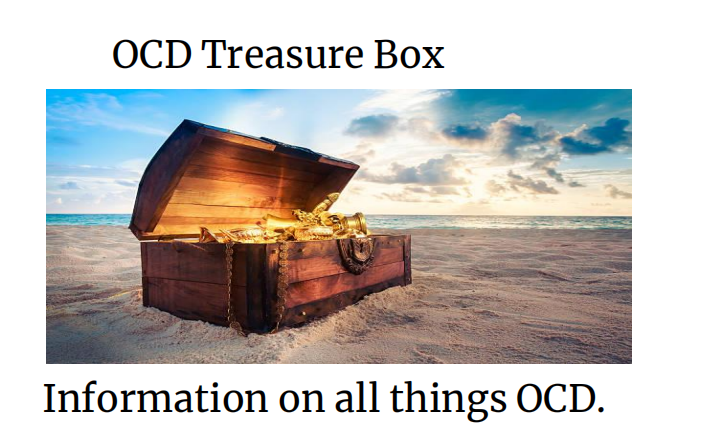What is OCD?
What is Obsessive Compulsive Disorder (OCD)?
Obsessive Compulsive Disorder (OCD) is a mental health condition which over the years has been totally misunderstood. The aim of this website is to clear up any misunderstandings about what OCD is and what it isn't. For many years a person with OCD has been portrayed in the media as being someone who is excessively tidy or who can't stop cleaning. Whilst both these are valid subtypes and are extremely debilitating, OCD is so much more than this. There are many different sub-types, (often referred to as themes) of OCD. Below is a list of these:
1. Harm OCD
2. Relationship OCD (sometimes referred to as ROCD)
3. Contamination OCD
4. SO OCD (Sexual Orientation OCD)
5. POCD (Peadophilia OCD)
6. Just Right OCD
7. Sensory Motor OCD
8. PURE OCD
9. Scrupulosity OCD
Obsessions and Compulsions
Obsessions
The obsessions of the condition OCD are the intrusive thoughts that a person has. As a person who has had lived experience of OCD an obsessive intrusive thought might be, 'if I don't wash this cup properly then the next person to drink out of it will become ill' This is the intrusive thought. For someone who doesn't have OCD the thought will be fleeting and dissipate almost as quickly as it came. However, for a person who has OCD the thought will get 'stuck' and they won't be able to stop thinking about it. Along with the thought comes incredible anxiety (increased heart rate, sweating, feeling nauseus and shortness of breath amongst others). To counteract this intense feeling of anxiety the person will engage in what are known as 'compulsions'
Compulsions
Compulsions are the 'Actions' that a person with OCD will perform to irradicate the intrusive thought and relieve the anxiety that they are feeling. The only problem with this is that the relief is short lived and the intrusive thought begins again. With our example of the person having to wash up a cup in a particular way otherwise the next person who drinks from the cup will become ill; the compulsion might be to wash the cup 5 times and rinse it 5 times to make sure this doesn't happen. However, the person may then think that they haven't completed the compulsion correctly and they will have to carry out the compulsion again. This may go on and on to the point where the person feels like they are 'going round and round in circles.' This can often make the person feel depressed and that there is no way out of this persistent cycle or constant 'loop.'
At the heart of all of this is 'uncertainty' and doubt. The person will need to feel 100% certain that something bad hasn't happened, isn't happening or won't happen in the future. The only problem with this is that, nothing in life, can be 100% certain. There is always going to be an element of doubt however small this might be. For someone who has OCD, 0.01% is enough uncertainty to keep the person engaged in compulsions. Throughout the pages of this website, I have spoken about the different subtypes of OCD. One question that I find fascinating is 'Why does one person with OCD suffer more with one subtype than another.' The true answer to this is that OCD will pick on the very thing that they value the most; the issues in life that they value and are most sensitive to. We will often see a person being most sensitive to one subtype, whilst also showing some sensitivity to a couple of others. There will also be some subtypes that the same person will have no real sensitivity to at all. However, another person with different values will show a greater sensitivity to other subtypes.
How to get out of this
The only way out of this persistent cycle is through a particular form of CBT known as 'Exposure Response Prevention' therapy. With the help and guidance of a trained CBT specialist a person who has OCD can learn to say 'no' to performing compulsions and learn to deal with the 'uncertainties' that this will cause. Many people who have OCD will have suffered with it for many years and therefore the therapist will help tailor any Exposure Response Prevention exercises to the persons individual needs, (please see above for an example of this). When doing these exercises it is important to build up a persons tolerance to uncertainty gradually. When doing Exposure Response Prevention Therapy, it might be, that to begin with a person can only deal with a minute of feeling uncertain before they have to do compulsions. By doing this they are 'delaying' the need to do a compusion. As they become more practiced at doing this the time that they can delay for will become longer. They will become more able to tolerate 'uncertainty' and this will lead to greater freedom in their lives.
